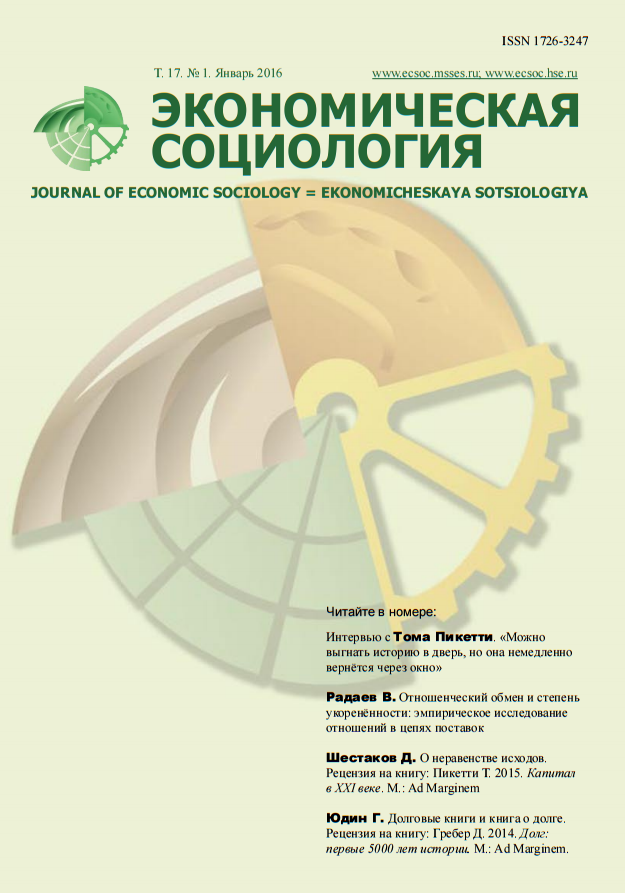On Inequality of Outcomes
Book Review: Piketty Т. (2015) Kapital v XXI veke [Capital in the Twenty-First Century], Moscow: Ad Marginem Press (in Russian); tr. from: Piketty T. (2014) Capital in the Twenty-First Century. Cambridge: Harvard University Press
Abstract
The much awaited appearance of the Russian translation of Capital in the Twenty-First Century by Tomas Piketty marks a milestone, and also brings an occasion to discuss the book’s main arguments as well as the arguments of its critics. Piketty charts the evolution of income and capital inequality in developed nations through the last two centuries. He states that despite what has been said in previous literature, inequality evolves in a U-shaped pattern with the bottom of the U being the three postwar decades. Piketty suggests that capitalism is hardwired to increase inequality due to what he calls three fundamental laws of capitalism. The most important third law states that inequality will grow as long as return on capital (r) is greater than output growth rate (g). While Piketty’s data seems like an accurate description of what occurs, Piketty’s theory had been met in a most unwelcome manner. Critics claimed that Piketty’s laws are not laws at all, and are actually either accounting identities or plainly incorrect statements. In this review, I also trace Piketty’s work to two particular traditions in social sciences: cliometrics — particularly the version known as series history — and to analytical Marxism. Seeing both of these traditions will help us to place Piketty’s book within the context of twentieth-century social science rather than isolated phenomena.













